When it comes to building or buying a sauna, choosing the right wood is one of the most critical decisions you’ll make. The type of wood you select not only impacts the longevity and durability of your sauna but also affects its overall aesthetic, fragrance, and health benefits. Among the many options available, red cedar, particularly Western Red Cedar, stands out as one of the most popular choices. But is red cedar the best wood for your sauna? Let’s explore.
This article dives deep into the topic of red cedar, comparing it to other wood types like white cedar, and discussing how to choose the perfect wood for your sauna. Whether you’re a first-time sauna builder or upgrading your current one, this guide will help you make an informed decision.
Why Wood Selection Matters for Saunas
Choosing the right kind of wood for a sauna is more than just an aesthetic decision. The type of wood you use directly affects:
- Heat Resistance: Saunas operate at high temperatures, and not all woods can handle the heat.
- Durability: Some woods are more resistant to rot, warping, and cracking, ensuring a longer-lasting sauna.
- Fragrance and Comfort: Certain woods, like cedar, emit a pleasant aroma and stay cool to the touch, enhancing the sauna experience.
Selecting the right sauna wood type ensures both functionality and comfort, so let’s explore why cedar is such a standout material.
What Makes Cedar a Popular Choice for Saunas?
Cedar has long been a favorite for sauna construction, and for good reason. Both Western Red Cedar and Eastern White Cedar offer unique advantages, making them ideal choices for sauna interiors and exteriors.
Key Features of Cedar:
- Durability: Cedar is naturally resistant to moisture, rot, and insects, which is essential for the humid environment of a sauna.
- Heat Insulation: Cedar’s low density makes it an excellent insulator, maintaining consistent sauna temperatures.
- Aroma: Cedar emits a warm, inviting fragrance that enhances relaxation and adds a spa-like quality to your sauna.
“Cedar is the gold standard for sauna construction due to its combination of beauty, durability, and functionality.” – Sauna Experts
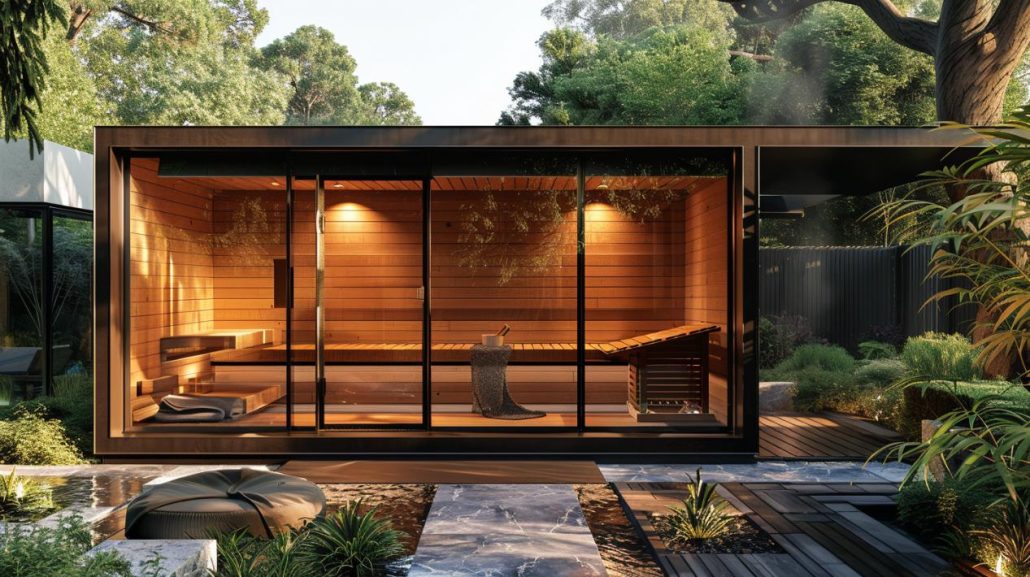
Western Red Cedar: The Best Wood for Your Sauna?
Western Red Cedar is one of the most widely recommended woods for saunas. Known for its rich reddish-brown color and aromatic fragrance, Western Red Cedar is a top choice for both traditional and infrared saunas.
Pros of Western Red Cedar:
- Durability: Resistant to decay and rot, even in high-humidity environments.
- Fragrance: Emits a soothing, natural aroma that many sauna users love.
- Low Heat Conductivity: Stays cool to the touch, making it comfortable to use in high-temperature settings.
Did You Know?
Western Red Cedar contains natural oils that act as preservatives, extending the life of your sauna and reducing maintenance requirements.
Red cedar is widely used in both indoor and outdoor saunas. Its natural properties make it ideal for creating a relaxing and long-lasting sauna experience. For example, many luxury sauna manufacturers, like Veritasolus, incorporate western red cedar in their designs due to its durability and aesthetic appeal.
Some products like the traditional sauna room wholesaler-SR3025-ST using the top red cedar from overseas.
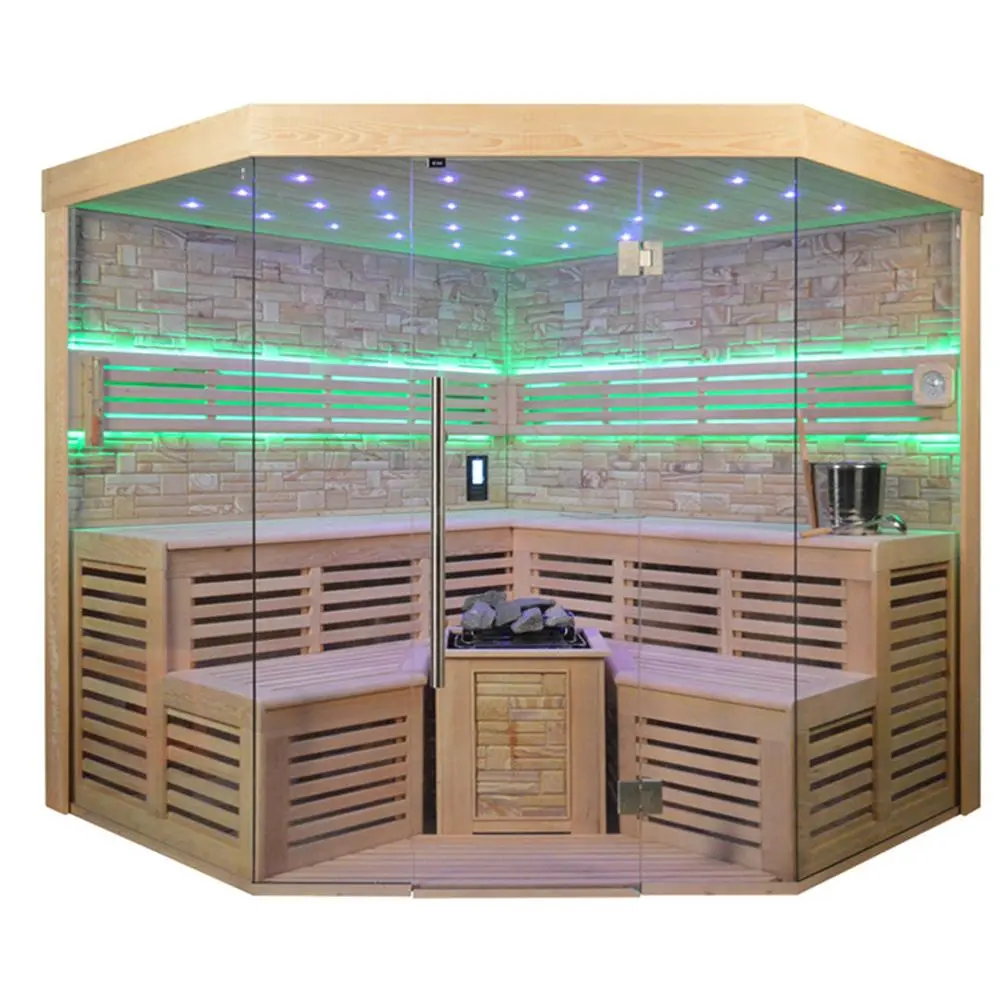
Eastern White Cedar for Saunas: How Does It Compare?
Another popular choice is Eastern White Cedar, known for its lighter color and subtle fragrance. While it shares many benefits with Western Red Cedar, there are some differences to consider.
Advantages of Eastern White Cedar:
- Affordability: Generally more cost-effective than Western Red Cedar.
- Light Aesthetic: Its pale color suits minimalist and modern sauna designs.
- Durable: Like its red counterpart, it resists rot and decay.
Drawbacks:
- Faint Aroma: Lacks the strong fragrance of Western Red Cedar, which some users prefer.
- Less Luxurious Appearance: The light color may not appeal to everyone.
Cedar vs Other Sauna Woods: A Comparison
How does cedar wood stack up against other common sauna woods like spruce, aspen, or hemlock?
| Wood Type | Durability | Fragrance | Cost | Heat Conductivity |
| Western Red Cedar | High | Strong, aromatic | High | Excellent |
| Eastern White Cedar | High | Mild, subtle scent | Medium | Excellent |
| Spruce | Medium | None | Low | Moderate |
| Aspen | Medium | None | Medium | Good |
| Hemlock | Medium | None | Low | Moderate |
For more traditional sauna options, check out this classic sauna room supplier-SR3020.
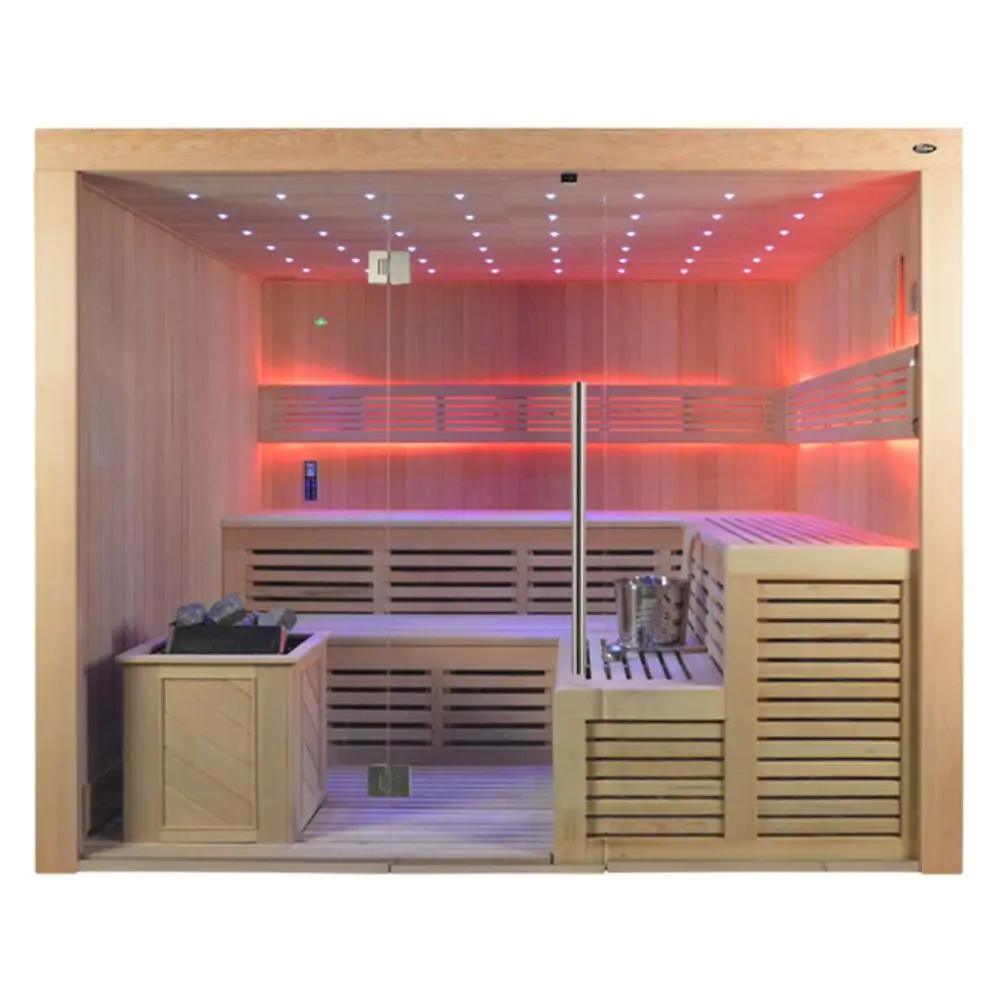
Key Considerations for Choosing Sauna Wood
When selecting wood for your sauna, keep the following in mind:
- Durability: Choose a wood that resists rot and warping over time.
- Comfort: Look for woods with low heat conductivity to avoid burns.
- Aroma: If fragrance is important to you, opt for aromatic woods like cedar.
- Aesthetic: Consider the color and grain pattern of the wood.
- Cost: Balance your budget with long-term value.
The Benefits of Using Cedar in Your Sauna
Using cedar in your sauna provides a host of advantages:
Health Benefits:
- Cedar’s natural oils have antifungal and antibacterial properties, promoting a cleaner sauna environment.
Maintenance:
- Cedar requires minimal maintenance, thanks to its natural resistance to decay.
Aesthetic Appeal:
- The warm tones of cedar create a cozy and inviting sauna atmosphere.
For high-quality cedar saunas, explore indoor sauna exporters SR3062-WM.
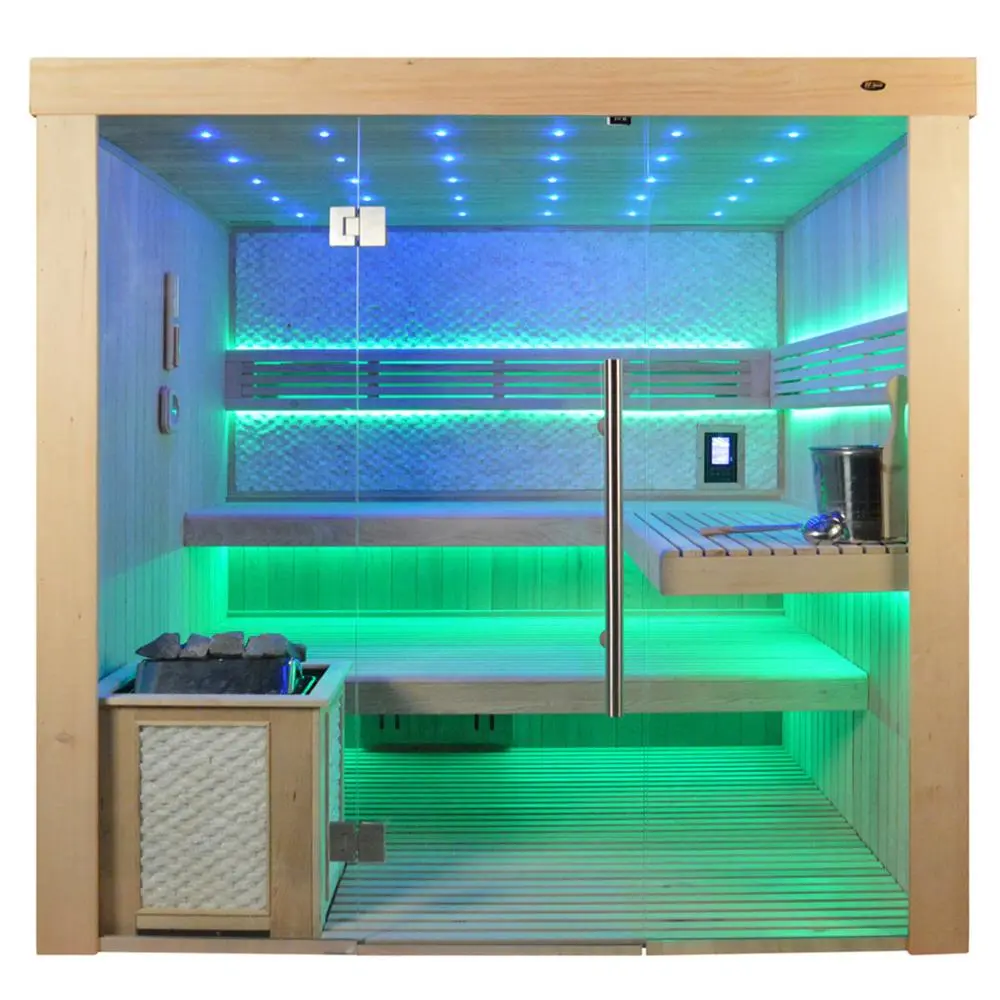
Are There Any Downsides to Cedar?
While cedar is a fantastic choice, it’s not without drawbacks:
- Cost: High-quality cedar, like Western Red Cedar, can be expensive.
- Allergies: Some individuals may have allergic reactions to cedar’s natural oils.
- Softness: Cedar is a relatively soft wood, which makes it prone to dents and scratches.
Popular Sauna Wood Types: A Quick Comparison Chart
Here’s a quick summary of common sauna wood types:
| Wood | Best Feature | Use Case |
| Western Red Cedar | Fragrance, durability | High-end saunas |
| Eastern White Cedar | Affordable, light color | Budget-friendly saunas |
| Spruce | Cost-effective | Exterior saunas |
| Aspen | Non-aromatic | Allergy-friendly saunas |
| Hemlock | Affordable, neutral scent | Entry-level saunas |
For more sauna options, check out this indoor sauna customize SR3071.
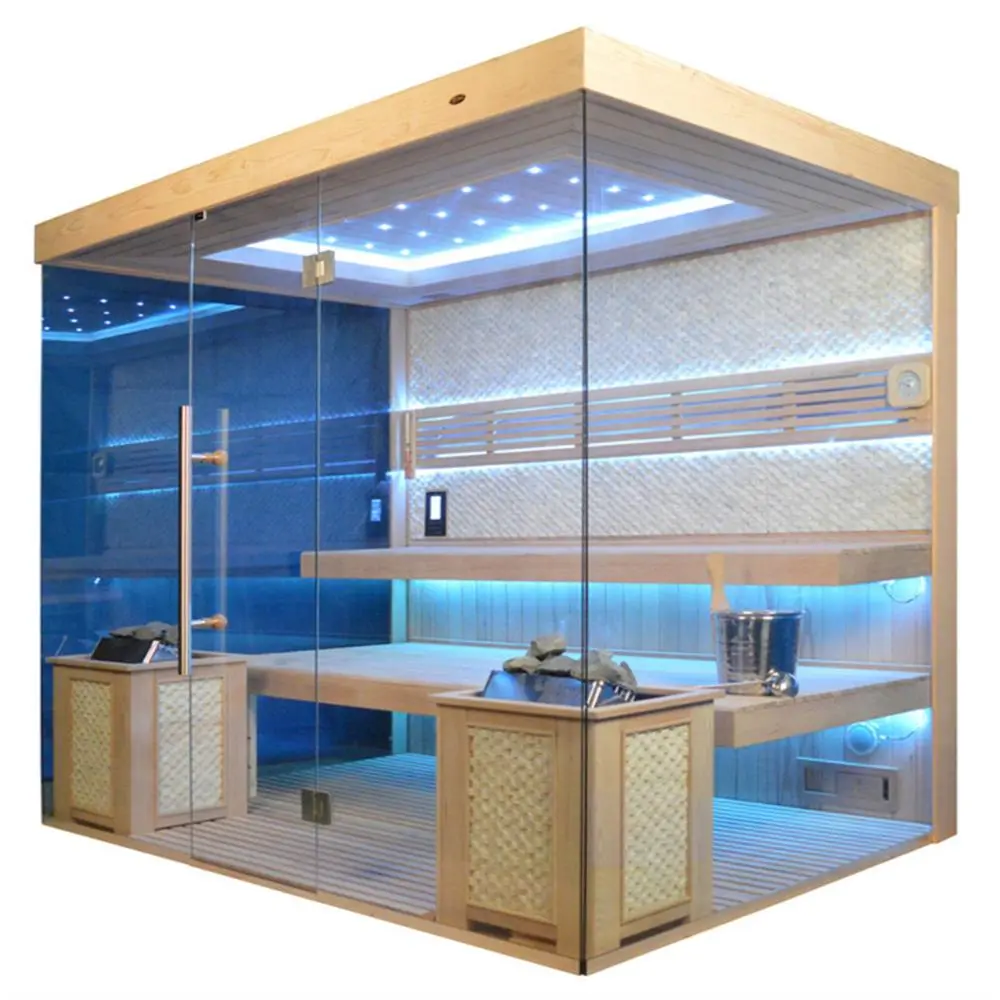
Tips for Building a Cedar Sauna
- Choose Kiln-Dried Cedar: This ensures the wood is free from moisture and ready for sauna use.
- Seal Exterior Panels: While cedar is naturally resistant to rot, sealing the exterior panels adds extra protection.
- Opt for Tongue-and-Groove Boards: These ensure a tight fit, minimizing heat loss.
For premium sauna designs, explore Professional Bathroom Equipment Manufacturer | Sauna Room, Outdoor Spa, Swimming Spa, Steam Shower Room – Your Export Expert Unlocking Global Markets.
Final Thoughts and Key Takeaways
When it comes to sauna construction, Western Red Cedar and Eastern White Cedar are standout choices for their durability, fragrance, and aesthetic appeal. Here are the key points to remember:
- Western Red Cedar offers superior durability and a rich aroma, ideal for high-end saunas.
- Eastern White Cedar is a cost-effective alternative with a lighter aesthetic.
- Always prioritize wood that resists rot and maintains its integrity in high heat and humidity.
